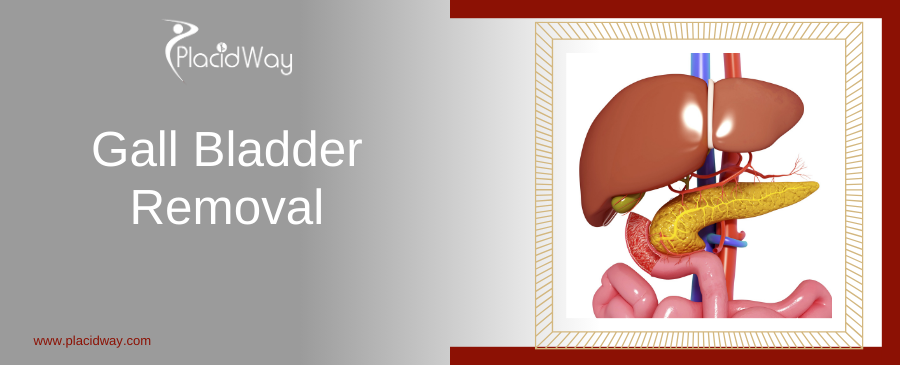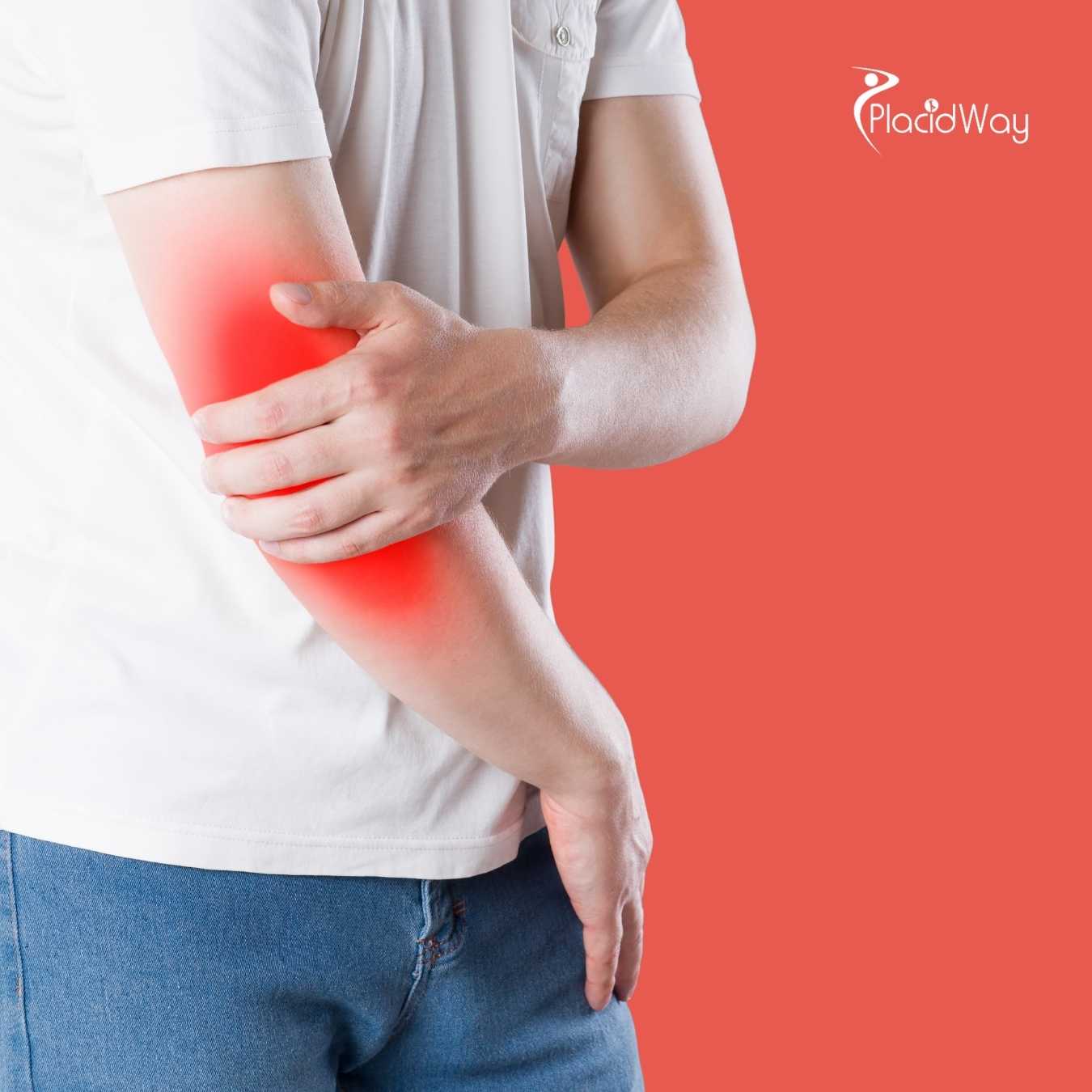
Finding Relief: Your Comprehensive Guide to Gall Bladder Removal (Cholecystectomy) Abroad
Experiencing persistent abdominal pain, nausea, or indigestion? These uncomfortable symptoms might be signaling a problem with your gallbladder, a small organ nestled beneath your liver. For many, this nagging discomfort escalates into debilitating pain, often caused by gallstones – hard deposits that can block bile flow and lead to inflammation or infection.
When conservative treatments aren't enough, gall bladder removal, medically known as a cholecystectomy, becomes the most effective solution. This common surgical procedure removes the troubled gallbladder, offering lasting relief and preventing further complications. Millions worldwide undergo this surgery annually, regaining their quality of life.
For those seeking high-quality care without the high costs or long waiting lists often found in their home countries, considering gall bladder removal abroad through medical tourism is an increasingly popular and viable option. This guide will walk you through everything you need to know about cholecystectomy, from understanding your symptoms to navigating the journey of having your procedure in a top-rated international destination.
What are the common symptoms indicating gall bladder problems?
Recognizing the signs of gall bladder issues is crucial for timely diagnosis and treatment. The most common indication that you might need gall bladder removal is experiencing pain from gallstones, a condition called cholelithiasis. While some people with gallstones have no symptoms (asymptomatic), others can experience severe and disruptive issues. The primary symptom is often:
- Biliary Colic: Intense, sudden pain in the upper right abdomen or center of your belly, often radiating to your back or right shoulder. This pain can last from minutes to several hours and is frequently triggered after eating fatty meals.
- Nausea and Vomiting: Often accompanying abdominal pain, especially during or after a gallstone attack.
- Indigestion and Bloating: A general feeling of discomfort, fullness, or gas after meals, sometimes mistaken for other digestive problems.
- Fever and Chills: These symptoms, combined with abdominal pain, can indicate an infection or inflammation of the gallbladder (cholecystitis).
- Jaundice: A yellowing of the skin and eyes, which occurs if a gallstone blocks the bile duct leading from the liver, preventing bile from draining properly.
- Dark Urine and Pale Stools: Also signs of a bile duct blockage.
If you're searching online for "gallbladder pain symptoms" or "signs I need gall bladder surgery," and these descriptions resonate, it's time to consult a doctor.
What causes gallstones and who is at risk for needing gall bladder removal?
Gallstones are the most common reason for gall bladder removal. These small, hard deposits can range in size from a grain of sand to a golf ball. They form when substances in bile—a digestive fluid produced by your liver and stored in the gallbladder—become unbalanced. The two main types are:
- Cholesterol Gallstones: The most common type, usually yellow-green, forming when bile contains too much cholesterol and not enough bile salts.
- Pigment Gallstones: Dark brown or black, these form when bile contains too much bilirubin, a waste product.
Several factors increase your risk of developing gallstones and, consequently, needing a cholecystectomy:
- Obesity: Being overweight or obese significantly increases the risk, particularly for cholesterol gallstones.
- Rapid Weight Loss: Losing weight too quickly (e.g., after bariatric surgery or very low-calorie diets) can disrupt bile chemistry.
- Diet: High-fat, high-cholesterol, low-fiber diets may contribute.
- Gender: Women are more likely to develop gallstones than men, especially those who are pregnant, use birth control pills, or are on hormone replacement therapy.
- Age: Risk increases with age, particularly after 40.
- Family History: If gallstones run in your family, your risk is higher.
- Certain Medical Conditions: Diabetes, Crohn's disease, liver disease, and some blood disorders can increase risk.
Many patients search for "what causes gallstones" or "risk factors for gallbladder disease" when they first experience symptoms.
What types of gall bladder removal procedures are available?
Gall bladder removal surgery has evolved significantly, offering options that prioritize patient comfort and recovery. The two main types are:
-
Laparoscopic Cholecystectomy (Minimally Invasive Gallbladder Surgery):
- This is the most common and preferred method.
- The surgeon makes several small incisions (typically 3-4) in the abdomen.
- A tiny camera (laparoscope) and specialized surgical tools are inserted through these incisions.
- The abdomen is inflated with carbon dioxide gas to provide a better view.
- The surgeon views the internal organs on a monitor and carefully removes the gallbladder.
- Benefits: Smaller incisions, less pain, shorter hospital stay (often same-day discharge or one night), faster recovery time, and minimal scarring. This is what most people mean when they search for "gall bladder surgery" or "laparoscopic cholecystectomy."
-
Open Cholecystectomy (Traditional Gallbladder Surgery):
- This method involves a single, larger incision (typically 4-6 inches) in the upper right abdomen, below the ribs.
- The surgeon directly accesses and removes the gallbladder.
- This approach is generally used when laparoscopic surgery isn't possible or safe, such as in cases of severe inflammation, extensive scarring from previous surgeries, or certain complications.
- Benefits: May be necessary for complex cases, but involves more pain, a longer hospital stay (3-5 days), and a longer recovery period than laparoscopic surgery.
Sometimes, a laparoscopic procedure may need to be converted to an open procedure if unforeseen complications arise during surgery.
Who is eligible for gall bladder removal surgery?
The decision to undergo gall bladder removal is made after careful evaluation by a healthcare professional. Generally, you may be considered eligible for a cholecystectomy if you have:
- Symptomatic Gallstones: Recurrent episodes of biliary colic (pain), nausea, and other digestive issues caused by gallstones. This is the most common reason.
- Cholecystitis: Inflammation of the gallbladder, either acute (sudden and severe) or chronic (long-term).
- Choledocholithiasis: Gallstones that have moved into the bile ducts, causing blockages and potential complications like jaundice or pancreatitis.
- Gallstone Pancreatitis: Inflammation of the pancreas caused by a gallstone blocking the pancreatic duct.
- Gallbladder Polyps: If polyps are large or rapidly growing, they may have a risk of becoming cancerous.
- Biliary Dyskinesia: A condition where the gallbladder doesn't function properly, even without gallstones.
Your doctor will conduct various diagnostic tests, including ultrasounds, blood tests, and potentially MRI or CT scans, to confirm the diagnosis and assess your overall health. They will also consider any pre-existing conditions that might affect your eligibility for surgery, such as heart disease or blood clotting disorders.
What is the typical recovery time and what can I expect after gall bladder surgery?
Recovery after gall bladder removal varies depending on the type of surgery:
-
Laparoscopic Cholecystectomy Recovery:
- Hospital Stay: Often a same-day procedure, or an overnight stay.
- Pain Management: Mild to moderate pain at incision sites and sometimes shoulder pain (from the gas used during surgery) for a few days, manageable with prescribed pain relievers.
- Activity: Most patients can walk around within hours and resume light activities (e.g., office work, short walks) within a few days to a week. Strenuous exercise, heavy lifting, and demanding physical activity should be avoided for 2-4 weeks.
- Full Recovery: Typically within 1-2 months, although the small incisions heal much faster.
-
Open Cholecystectomy Recovery:
- Hospital Stay: Usually 3-5 days.
- Pain Management: More significant pain requiring stronger medication for a longer period.
- Activity: Return to light activities may take 2-4 weeks. Strenuous activities are generally restricted for 6-8 weeks or longer.
- Full Recovery: Can take 2-3 months.
What to expect after surgery (for both types):
- Diet: You'll likely start with clear liquids, then progress to soft, low-fat foods. Most people can return to a regular diet within a few weeks, though some may need to avoid very fatty or spicy foods for a while. The body adapts to digesting fat directly without the gallbladder's storage function.
- Bowel Habits: It's common to experience temporary diarrhea or softer stools as your body adjusts. This usually resolves over time.
- Incisions: Keep them clean and dry. Small bandages might be needed.
- Follow-up: You'll have a post-operative check-up with your surgeon, typically within 1-2 weeks.
Patients often search for "gall bladder surgery recovery time" or "life without a gall bladder diet" to prepare.
What are the potential risks and side effects of gall bladder removal?
While gall bladder removal is a very common and generally safe procedure, like any surgery, it carries some potential risks and side effects:
- Infection: At the incision sites or internally.
- Bleeding: Internally or at the incision sites.
- Bile Leak: Although rare, bile can leak from the bile ducts, requiring further intervention.
- Bile Duct Injury: A very serious but uncommon complication where the main bile duct is accidentally damaged during surgery.
- Injury to Nearby Organs: Such as the liver, small intestine, or colon (very rare).
- Anesthesia Complications: Reactions to medication, breathing problems, blood clots.
- Post-Cholecystectomy Syndrome (PCS): A small percentage of people (around 5-10%) may experience persistent symptoms after surgery, such as abdominal pain, indigestion, diarrhea, or nausea. This can be due to various reasons, including bile flowing more directly into the intestine or residual gallstones in the bile ducts.
- Hernia: Rarely, a hernia can develop at an incision site.
It's important to discuss these risks thoroughly with your surgeon, especially if you are considering "gallbladder surgery abroad" and want to understand the safety protocols in place.
How do gall bladder removal costs compare worldwide?
The cost of gall bladder removal (cholecystectomy) can vary dramatically based on location, type of procedure (laparoscopic vs. open), hospital facilities, surgeon's fees, and whether complications arise. Here’s a general comparison to give you an idea:
| Country | Average Cost (USD) - Laparoscopic Cholecystectomy | Notes on Cost Factors |
|---|---|---|
| United States | $10,000 - $30,000+ | Highest costs globally, varies by state, hospital, and insurance coverage. |
| Canada | $7,000 - $15,000 (for uninsured) | Covered by public healthcare for residents; costs for non-residents can be substantial. |
| United Kingdom | $7,000 - $12,000 (private) | Covered by NHS; private options have similar costs to Canada for uninsured. |
| Mexico | $3,500 - $6,500 | Excellent value, close proximity for North Americans, highly sought for medical tourism. |
| India | $3,000 - $5,500 | Known for highly skilled surgeons and world-class JCI-accredited hospitals. |
| Turkey | $4,000 - $7,000 | Modern facilities, experienced doctors, often includes accommodation/transfer packages. |
| Thailand | $4,500 - $7,500 | Combines quality care with an attractive recovery destination. |
These figures are estimates and can change. They generally include surgeon's fees, anesthesia, and hospital costs, but may not always include pre-operative tests, post-operative medications, or travel expenses. This vast difference in "cost of gallbladder surgery" is a primary driver for medical tourism.
Why should I consider traveling abroad for gall bladder removal surgery?
For many, the idea of "gall bladder removal abroad" is driven by practical and compelling reasons:
- Significant Cost Savings: As seen in the table above, the most prominent advantage is the dramatic reduction in costs, especially compared to the USA, Canada, and Western Europe. This makes essential surgery accessible to those without adequate insurance or with high deductibles.
- Access to Immediate Care: In countries with universal healthcare systems, waiting lists for non-emergency surgeries like cholecystectomy can be lengthy. Medical tourism allows patients to bypass these queues and receive timely treatment.
- High-Quality Medical Facilities: Many medical tourism destinations boast state-of-the-art hospitals, often accredited by international organizations like Joint Commission International (JCI), ensuring world-class standards of care.
- Experienced Surgeons: Surgeons in popular medical tourism hubs are often highly experienced, having performed a high volume of procedures.
- Privacy and Recovery Environment: The opportunity to recover discreetly in a relaxing, often scenic location, away from the stresses of home, appeals to many.
- All-Inclusive Packages: Many clinics and facilitators offer packages that include surgery, accommodation, airport transfers, and sometimes even a mini-vacation.
Which countries offer the best value and quality for gall bladder removal as a medical tourist?
When searching for "best country for gall bladder surgery" or "affordable cholecystectomy abroad," several nations consistently rise to the top:
-
Mexico: A top choice for North Americans due to its close proximity, excellent private hospitals in cities like Tijuana, Cancun, and Guadalajara, and significantly lower costs.
-
India: Renowned for its highly skilled surgeons, cutting-edge technology, and numerous JCI-accredited hospitals offering comprehensive medical tourism packages at a fraction of Western prices.
-
Turkey: Offers modern hospitals, particularly in Istanbul and Ankara, with internationally trained surgeons. It's becoming a major hub for European patients seeking quality and value.
-
Thailand: Known for its luxurious private hospitals, warm hospitality, and the ability to combine surgery with a relaxing vacation. Destinations like Bangkok and Phuket are popular.
-
Poland: An emerging destination in Europe, offering high-quality medical care at competitive prices, particularly for patients from Western Europe. Cities like Warsaw and Krakow have modern clinics.
These countries consistently deliver excellent outcomes for procedures like gall bladder removal, balancing cost-effectiveness with world-class medical standards.
What should I expect when planning to travel for gall bladder removal abroad?
Planning for "medical tourism gall bladder removal" involves several key steps to ensure a smooth and successful experience:
- Initial Consultation & Research: Start by researching potential destinations and clinics. A medical tourism facilitator like PlacidWay can help you gather information, compare options, and connect you with reputable providers.
- Medical Records Review: You'll need to share your medical history, diagnostic reports (ultrasounds, blood tests), and a doctor's referral. This allows the international surgical team to assess your case and confirm your eligibility.
- Treatment Plan & Quote: Based on your records, the clinic will provide a personalized treatment plan, including the recommended procedure (e.g., laparoscopic cholecystectomy), estimated duration of stay, and an all-inclusive cost quote.
- Travel Arrangements: Once you accept the plan, you'll arrange flights and accommodation. Often, medical tourism packages include airport transfers, local transportation to the clinic, and hotel stays.
- Pre-Operative Care Abroad: Upon arrival, you'll have in-person consultations with your surgeon, anesthesiologist, and nurses, undergo any final diagnostic tests, and receive detailed pre-op instructions.
- Surgery & Hospital Stay: The procedure will be performed, followed by a short hospital stay (typically 1-2 days for laparoscopic).
- Post-Operative Recovery & Follow-up: You'll spend several days (usually 5-10 days for laparoscopic, longer for open) recovering in your destination before it's safe to fly home. Your surgeon will provide detailed post-operative instructions, including diet, activity restrictions, and medication. Virtual follow-ups may be arranged after your return home.
How can I ensure safety and quality when getting gall bladder removal in another country?
Ensuring "safe gall bladder surgery abroad" is paramount. Here’s how to minimize risks and maximize the quality of your experience:
- Choose Accredited Facilities: Look for hospitals that have international accreditations, such as Joint Commission International (JCI). JCI accreditation signifies that a hospital meets stringent international standards for patient safety and quality of care.
- Verify Surgeon Credentials: Research your surgeon's qualifications, experience, and specialization. Many international surgeons have training from Western countries and are board-certified. Ask for their CV and how many cholecystectomies they perform annually.
- Read Patient Reviews and Testimonials: Seek out genuine reviews from previous medical tourists. Websites like PlacidWay often feature patient stories and feedback.
- Utilize a Reputable Medical Tourism Facilitator: Companies like PlacidWay specialize in connecting patients with vetted, high-quality international providers. They can offer guidance, logistical support, and help ensure all aspects of your trip and treatment meet your expectations.
- Understand the Entire Package: Be clear about what is included in the cost (e.g., tests, anesthesia, hospital stay, medications, follow-up care, accommodation, transfers).
- Pre-existing Conditions: Disclose your complete medical history to ensure the medical team is fully prepared for your needs.
- Communication: Ensure there are clear communication channels, including language translation services if needed, to avoid misunderstandings with your medical team.
Are there real patient success stories for gall bladder removal abroad?
Absolutely. Thousands of individuals worldwide have successfully undergone gall bladder removal as part of their medical tourism journey. These "gall bladder surgery patient stories" often highlight not just the significant cost savings, but also:
- High Patient Satisfaction: Many report being highly satisfied with the quality of care, the professionalism of the medical staff, and the advanced facilities.
- Restored Quality of Life: Patients often share how the surgery relieved them of chronic pain and digestive issues, allowing them to return to normal activities and enjoy life without the fear of another gallstone attack.
- Seamless Experience: With the help of medical tourism facilitators, patients often describe a surprisingly smooth and stress-free process, from initial inquiry to post-operative follow-up.
- Personalized Attention: In many international clinics, patients feel they receive more personalized attention and care than they might have in their home countries.
- Discovery of New Cultures: The added benefit of experiencing a new country and culture during their recovery is often mentioned as a pleasant bonus.
These personal accounts serve as powerful reassurance for prospective patients, demonstrating that quality, affordable gall bladder removal is indeed a reality through medical tourism. PlacidWay often features testimonials and case studies from patients who have successfully completed their treatment abroad, illustrating the positive impact on their health and finances.
Take the Next Step with PlacidWay
Ready to explore treatment options abroad? Discover top clinics, compare prices, and get a free quote tailored to your needs with PlacidWay.
Urology Abroad | Best Urology Center










Share this listing